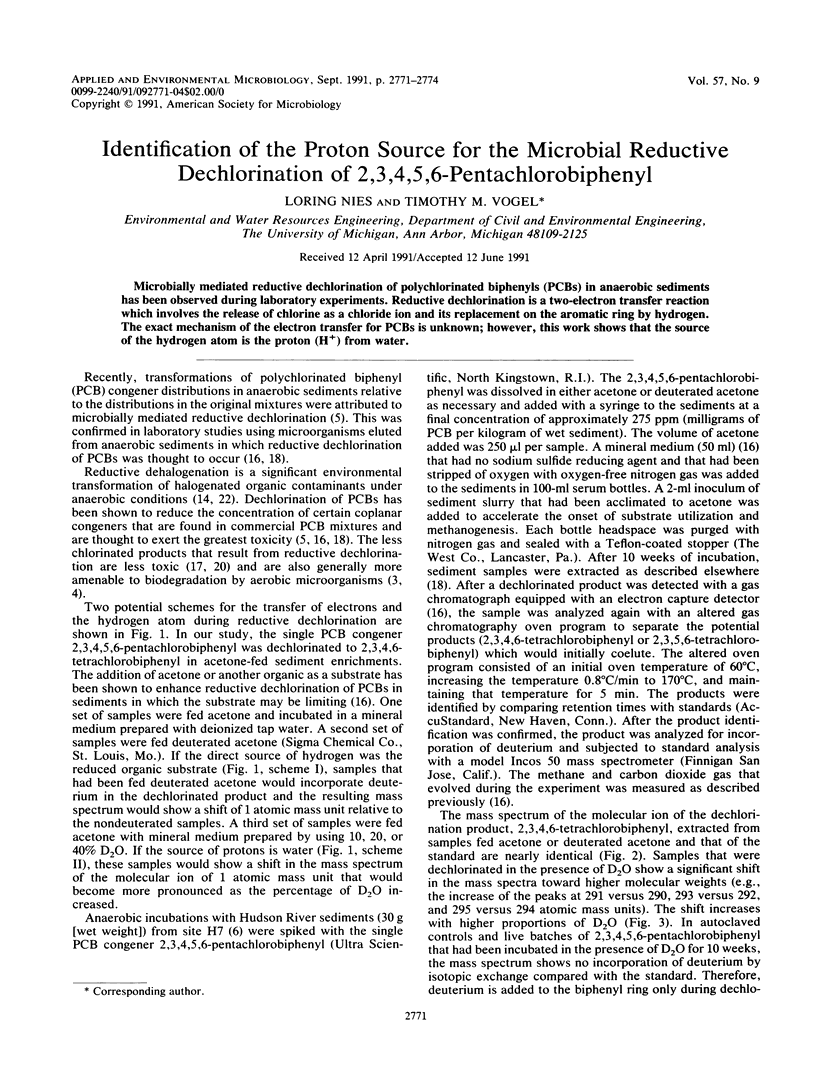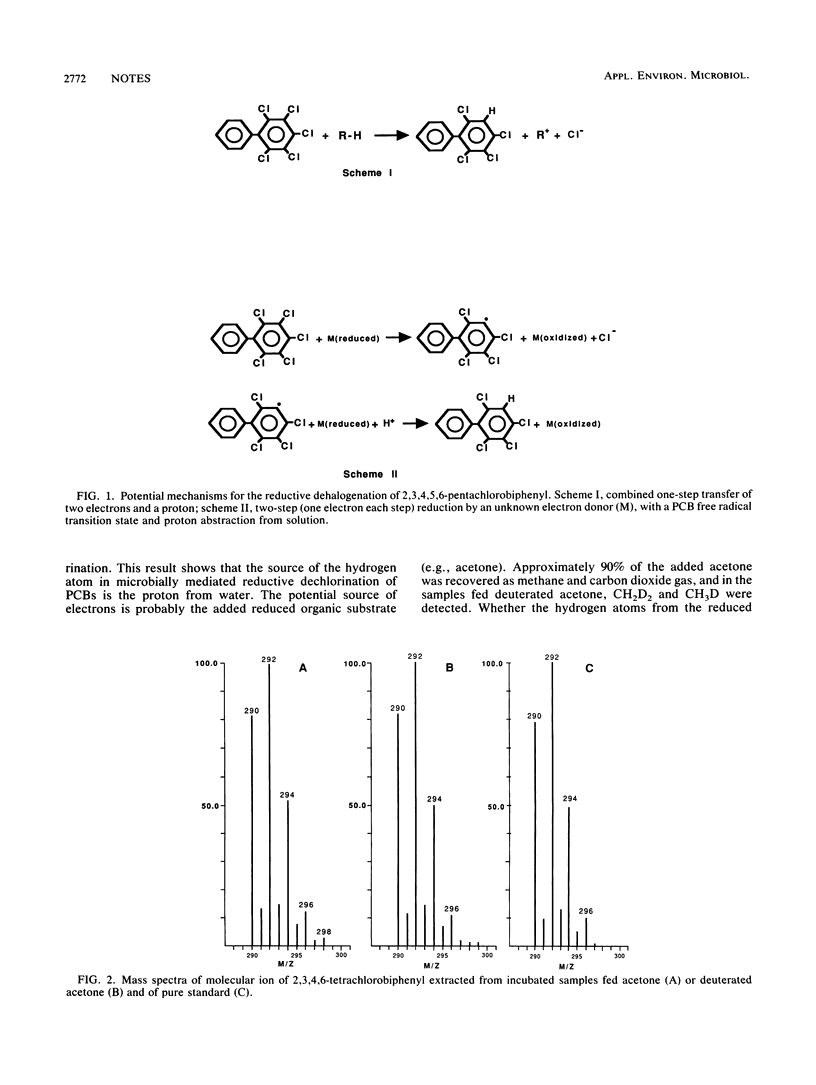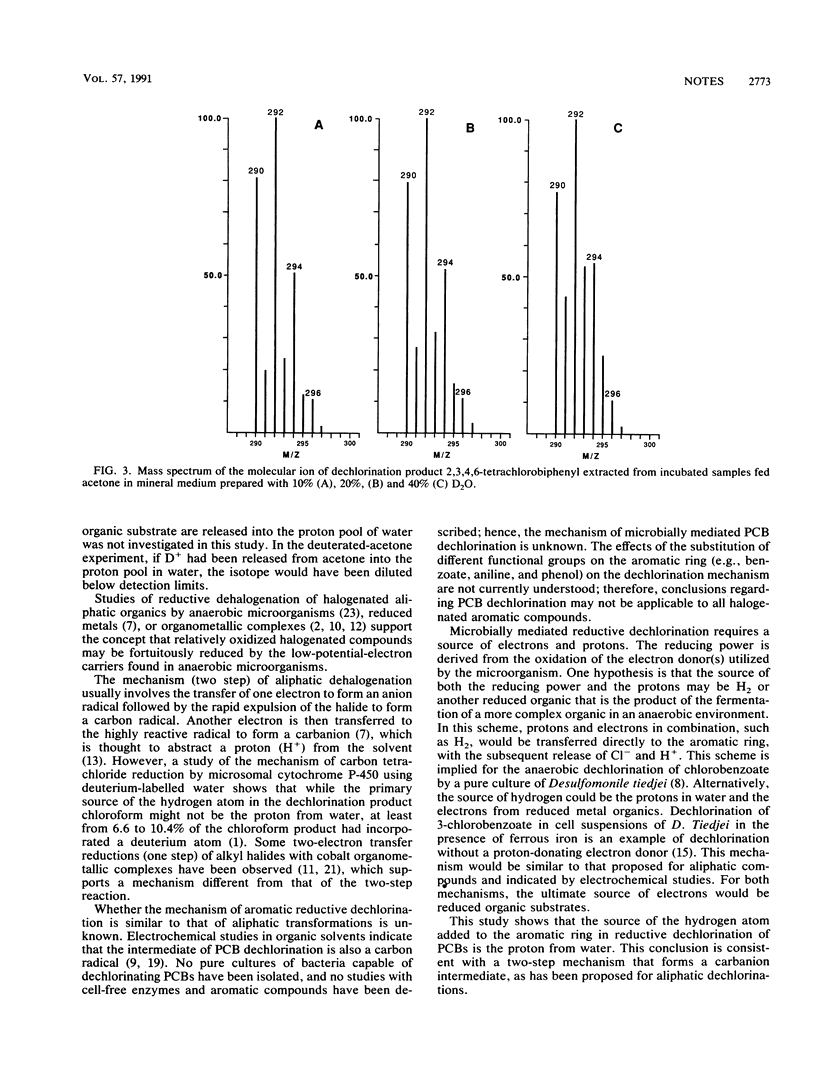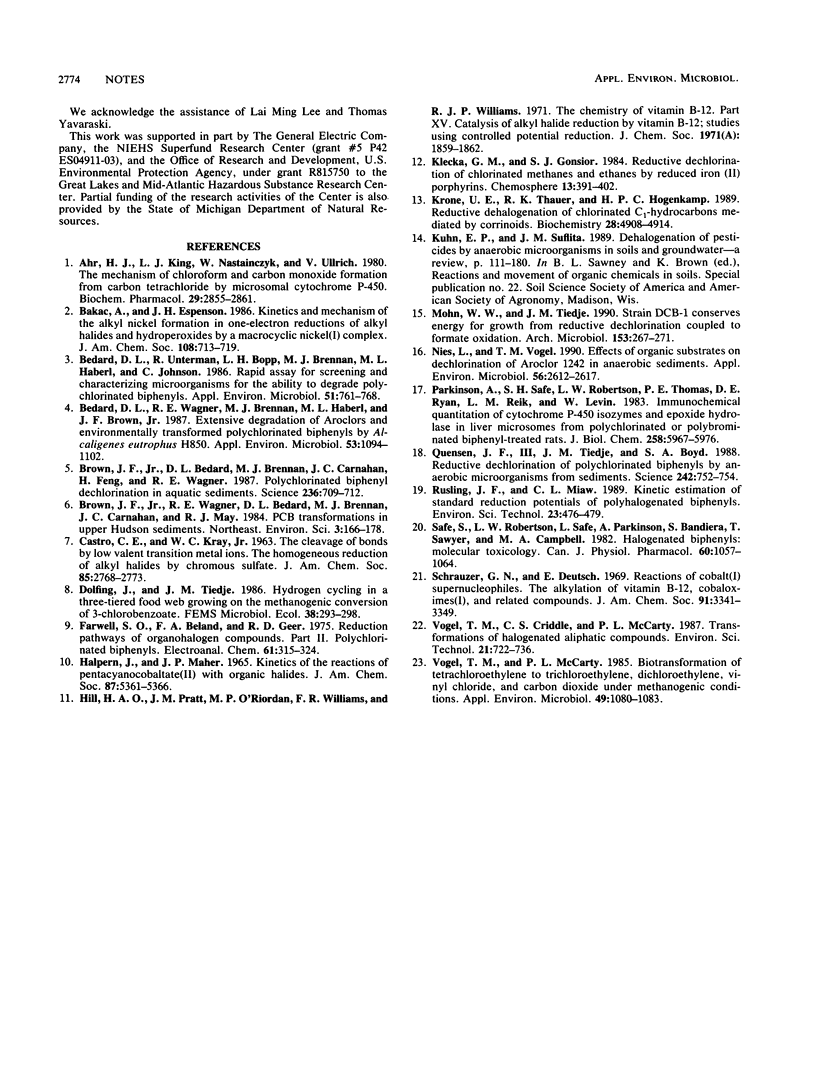Abstract
Microbially mediated reductive dechlorination of polychlorinated biphenyls (PCBs) in anaerobic sediments has been observed during laboratory experiments. Reductive dechlorination is a two-electron transfer reaction which involves the release of chlorine as a chloride ion and its replacement on the aromatic ring by hydrogen. The exact mechanism of the electron transfer for PCBs is unknown; however, this work shows that the source of the hydrogen atom is the proton (H+) from water.
Full text
PDF



Selected References
These references are in PubMed. This may not be the complete list of references from this article.
- Ahr H. J., King L. J., Nastainczyk W., Ullrich V. The mechanism of chloroform and carbon monoxide formation from carbon tetrachloride by microsomal cytochrome P-450. Biochem Pharmacol. 1980 Oct 15;29(20):2855–2861. doi: 10.1016/0006-2952(80)90022-2. [DOI] [PubMed] [Google Scholar]
- Bedard D. L., Unterman R., Bopp L. H., Brennan M. J., Haberl M. L., Johnson C. Rapid assay for screening and characterizing microorganisms for the ability to degrade polychlorinated biphenyls. Appl Environ Microbiol. 1986 Apr;51(4):761–768. doi: 10.1128/aem.51.4.761-768.1986. [DOI] [PMC free article] [PubMed] [Google Scholar]
- Bedard D. L., Wagner R. E., Brennan M. J., Haberl M. L., Brown J. F., Jr Extensive degradation of Aroclors and environmentally transformed polychlorinated biphenyls by Alcaligenes eutrophus H850. Appl Environ Microbiol. 1987 May;53(5):1094–1102. doi: 10.1128/aem.53.5.1094-1102.1987. [DOI] [PMC free article] [PubMed] [Google Scholar]
- Brown J. F., Jr, Bedard D. L., Brennan M. J., Carnahan J. C., Feng H., Wagner R. E. Polychlorinated biphenyl dechlorination in aquatic sediments. Science. 1987 May 8;236(4802):709–712. doi: 10.1126/science.236.4802.709. [DOI] [PubMed] [Google Scholar]
- Mohn W. W., Tiedje J. M. Strain DCB-1 conserves energy for growth from reductive dechlorination coupled to formate oxidation. Arch Microbiol. 1990;153(3):267–271. doi: 10.1007/BF00249080. [DOI] [PubMed] [Google Scholar]
- Nies L., Vogel T. M. Effects of organic substrates on dechlorination of aroclor 1242 in anaerobic sediments. Appl Environ Microbiol. 1990 Sep;56(9):2612–2617. doi: 10.1128/aem.56.9.2612-2617.1990. [DOI] [PMC free article] [PubMed] [Google Scholar]
- Parkinson A., Safe S. H., Robertson L. W., Thomas P. E., Ryan D. E., Reik L. M., Levin W. Immunochemical quantitation of cytochrome P-450 isozymes and epoxide hydrolase in liver microsomes from polychlorinated or polybrominated biphenyl-treated rats. A study of structure-activity relationships. J Biol Chem. 1983 May 10;258(9):5967–5976. [PubMed] [Google Scholar]
- Quensen J. F., 3rd, Tiedje J. M., Boyd S. A. Reductive dechlorination of polychlorinated biphenyls by anaerobic microorganisms from sediments. Science. 1988 Nov 4;242(4879):752–754. doi: 10.1126/science.242.4879.752. [DOI] [PubMed] [Google Scholar]
- Safe S., Robertson L. W., Safe L., Parkinson A., Bandiera S., Sawyer T., Campbell M. A. Halogenated biphenyls: molecular toxicology. Can J Physiol Pharmacol. 1982 Jul;60(7):1057–1064. doi: 10.1139/y82-151. [DOI] [PubMed] [Google Scholar]
- Schrauzer G. N., Deutsch E. Reactions of cobalt(I) supernucleophiles. The alkylation of vitamin B12s cobaloximes(I), and related compounds. J Am Chem Soc. 1969 Jun 4;91(12):3341–3350. doi: 10.1021/ja01040a041. [DOI] [PubMed] [Google Scholar]
- Vogel T. M., McCarty P. L. Biotransformation of tetrachloroethylene to trichloroethylene, dichloroethylene, vinyl chloride, and carbon dioxide under methanogenic conditions. Appl Environ Microbiol. 1985 May;49(5):1080–1083. doi: 10.1128/aem.49.5.1080-1083.1985. [DOI] [PMC free article] [PubMed] [Google Scholar]


